Castelli Estremo winter gloves review
Warm, comfortable and lightweight, with a cuff design that really works
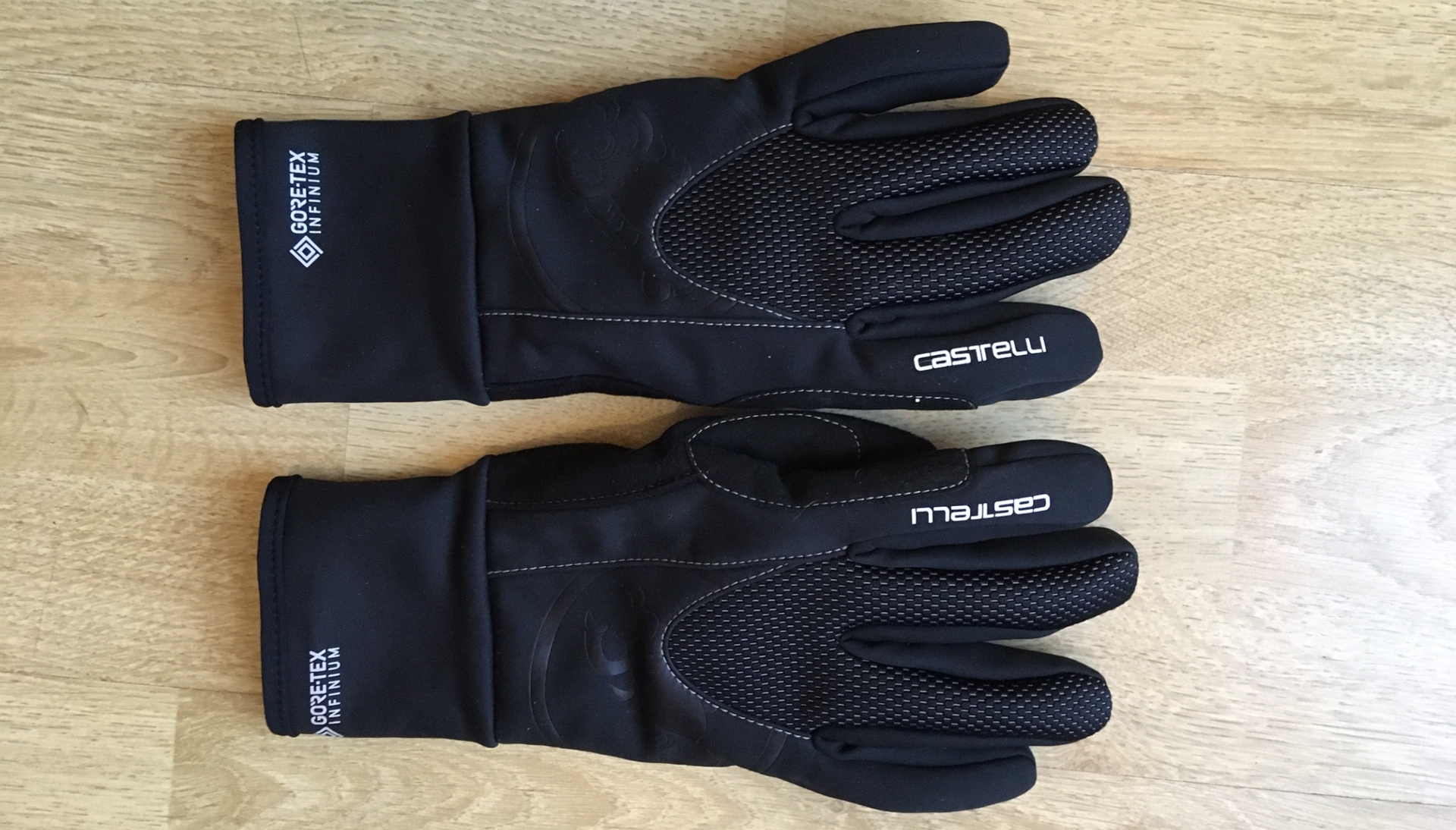
Castelli have managed to succeed in the tricky task of making a winter glove that’s warm enough for sub-zero temperatures without it turning into a cumbersome ski glove. The blend of fabrics is to be applauded. They gloves feel lightweight and allow you to move your fingers comfortably. They inner fleece fabric feels luxurious. And last, but not least, the windstopper material that covers the top of the glove and extends into the generously long cuff lives up to its name. In truth there isn’t much I’d change about the Estremo gloves, with its performance more than justifying its price tag.
-
+
Delivers warmth in temps below zero
-
+
Lightweight for a winter glove - 63g per glove
-
+
Long windstopper cuff seals in the heat
-
+
Exceptionally grippy palm
-
-
Could do with more reflective details
You can trust Cycling Weekly.
Castelli dubs the Estremo as its “warmest cold-weather glove”. It lists its temperature range from 5 degrees C to -5 degrees C, which is at the serious end of the spectrum for the best winter cycling gloves. In fact, this would suggest that, if accurate, it can pretty much handle anything the British winter can throw at it, at least with regards to weather you’re liking to be cycling in.
Castelli Estremo glove - the construction
The Estremo is designed as a warm winter glove built to withstand very cold conditions. Blending windproof and water resistant fabrics with a cosy fleece lining, on first glance it looks and feels like a premium glove - and is priced accordingly.
It's available in sizes from XS-XXL. We tested a medium and felt that they were pretty much true-to-size.
For a glove making such bold claims, the Estremo is surprisingly light and bereft of bulk. On my home scales they weighed just 63g per glove. Either the Castelli PR team is over-egging the pudding with its claims or there’s some clever choice of fabrics at work.
With regards to those materials, the top of the glove and its cuff is made from Gore-Tex Infinium. It’s essentially what was known as Gore-Tex Windstopper for years and its magical properties are made clear from this name. It’s also designed to offer some resistance to water as well as being breathable.
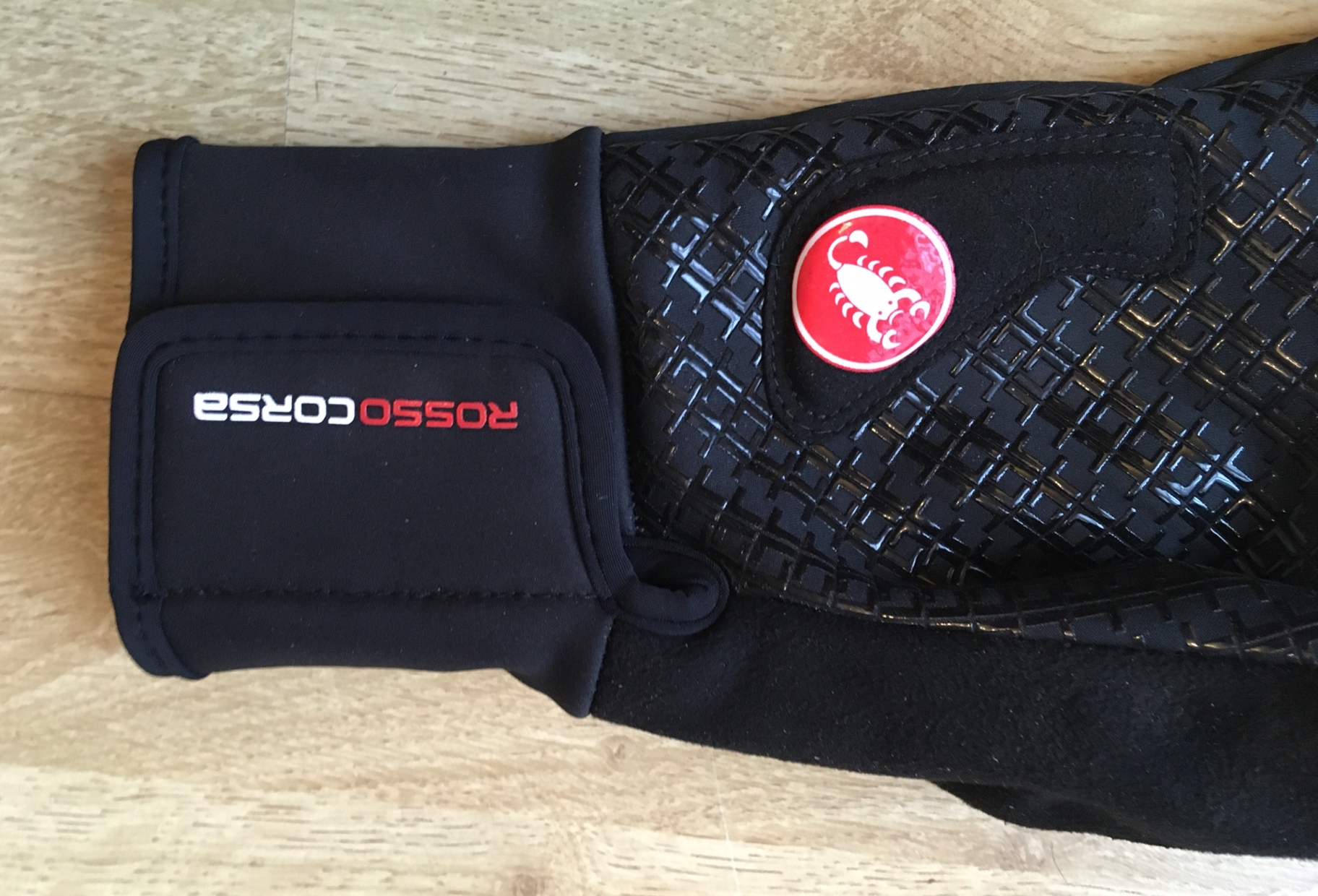
The cuff is particularly noteworthy. It’s plenty long and includes a velcro fastening for better adjustment. Pulling the gloves on the cuff provides substantial coverage of the wrist and lower forearm. Moreover, it can be cinched nice and tightly, either directly against the wrist or with a jersey and jacket tucked beneath it. It’s also lined with a soft fleece that no doubt adds some warmth but also feels pleasant if you opt to wear it against the skin.
Flip the glove over and there’s a palm made from Polarfleece 340G. It’s a lined fabric that’s lightweight and features a fleecy underside that feels, like the lining of the cuff, very cozy indeed. The entire palm is covered with a silicone print for improved grip. Unlike some gloves I've worn this really does feel genuinely sticky. There’s also a padding on the palm and a microsuede thumb panel so you can wipe your nose in style.
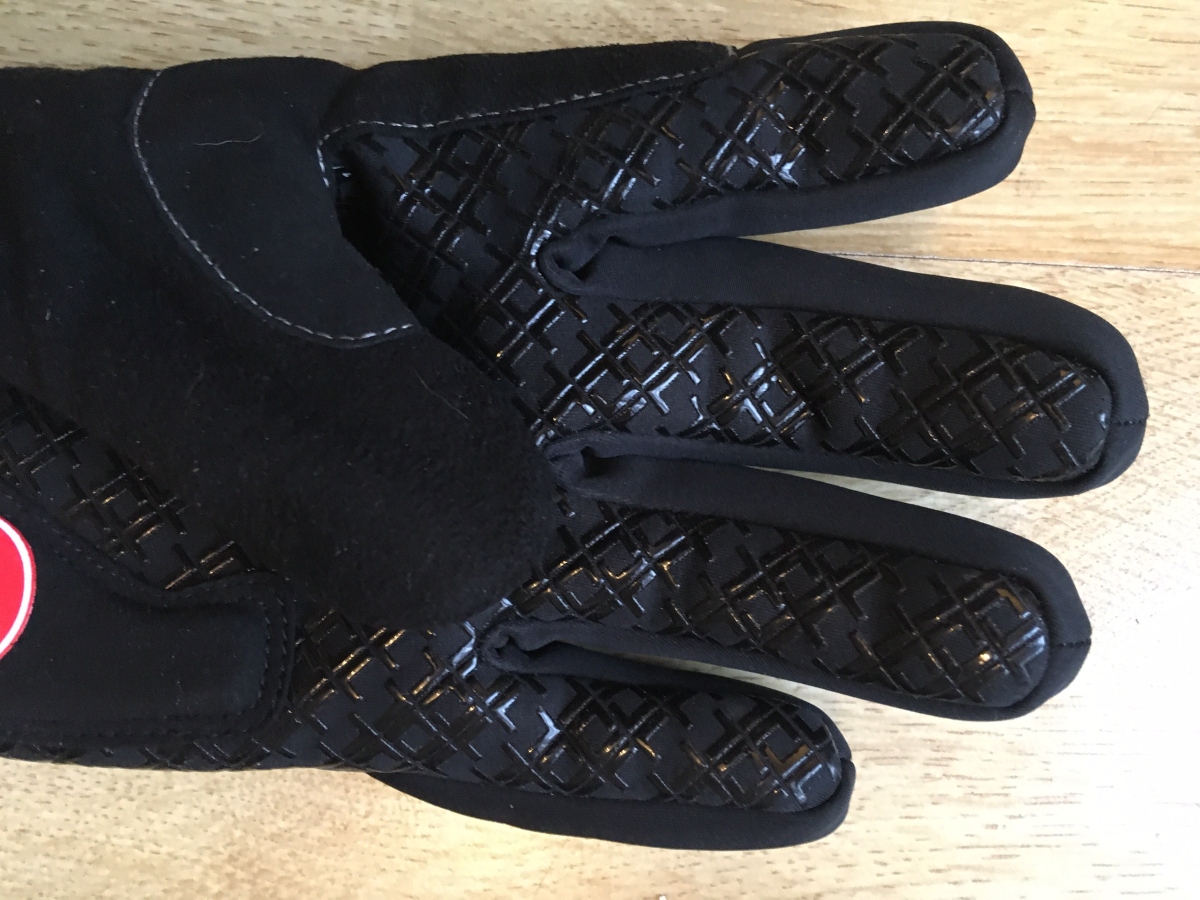
Surprisingly, there is only a minimal amount of reflective detailing. For a true winter glove this feels like Castelli has dropped the ball somewhat. But that aside, the Estremo on initial inspection looks like a glove that’s well put together, using premium fabrics that allow it to forgo the bulk without, hopefully, adversely affecting its ability to keep your hands and fingers warm.
Castelli Estremo winter gloves - the ride
The weather in the UK is a fickle beast and the first few outings wearing the Estremos had me ‘over gloved’. Despite it being November, temperatures hovered around 10 to 12 degrees and I quickly found that my hands were too warm.
Fortunately for the sake of this review it did get colder in the coming weeks and I was able to use the gloves in temperatures more befitting their name. And they didn’t disappoint. In below freezing conditions they managed to prevent my hands from turning into blocks of ice. I wish I could have said the same for my feet.
Nice and toasty I was able to mull over Castelli’s ‘pre-curved construction’. The fingers did appear to be shaped with a view to aiding movement. Coupled with the softness of the fabrics and their lightweight construction, the Estremo made for a highly dexterous glove right from the start.
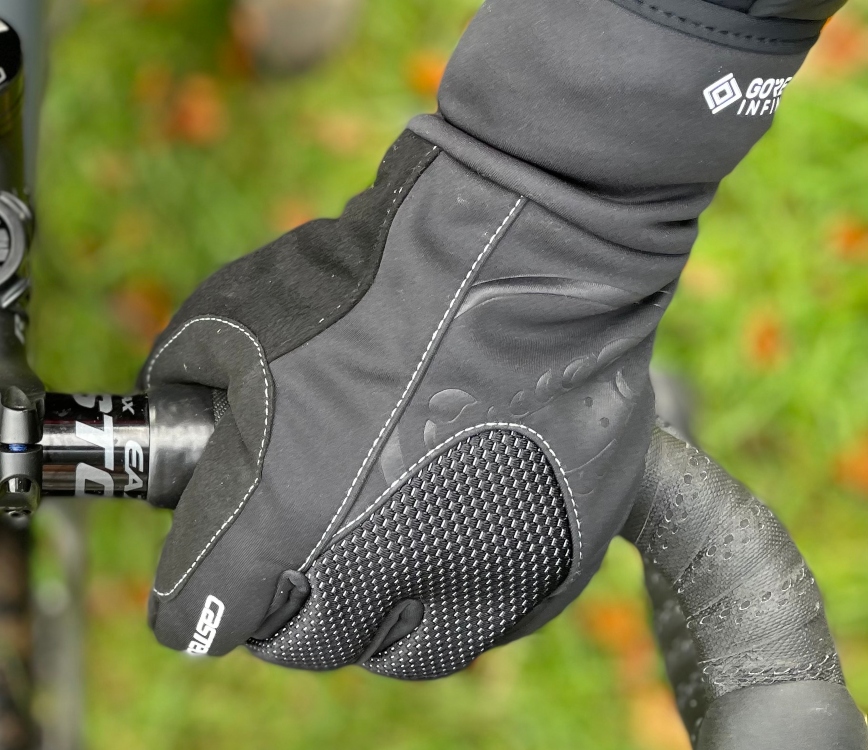
Whether it was braking, shifting or moving hand position on the bars, I could move my fingers with ease and received plenty of 'feel' too. The silicone treatment on the palm was indeed as sticky as it first appeared, aiding lever control and adding some reassurance when it started to drizzle. Even the little palm pad worked, adding just the right amount of cushioning without feeling obtrusive.
The cuff too performed admirably. The added length is a real winner in my book and should be a prerequisite for all serious winter gloves. Combined with the Velcro adjuster it enabled me to form a tight seal against the cold. The windstopper fabric then did its job to ensure that my hands and fingers remained warm.
The gloves also managed to regulate the temperature generated inside the glove. While the outside temperature stayed below zero the blend of fabrics combined to dig deep, keeping my fingers from becoming cold and numb. Yet as the morning wore on and it began to get warmer the same materials allowed my hands to breath a little so not to get clammy and uncomfortable.
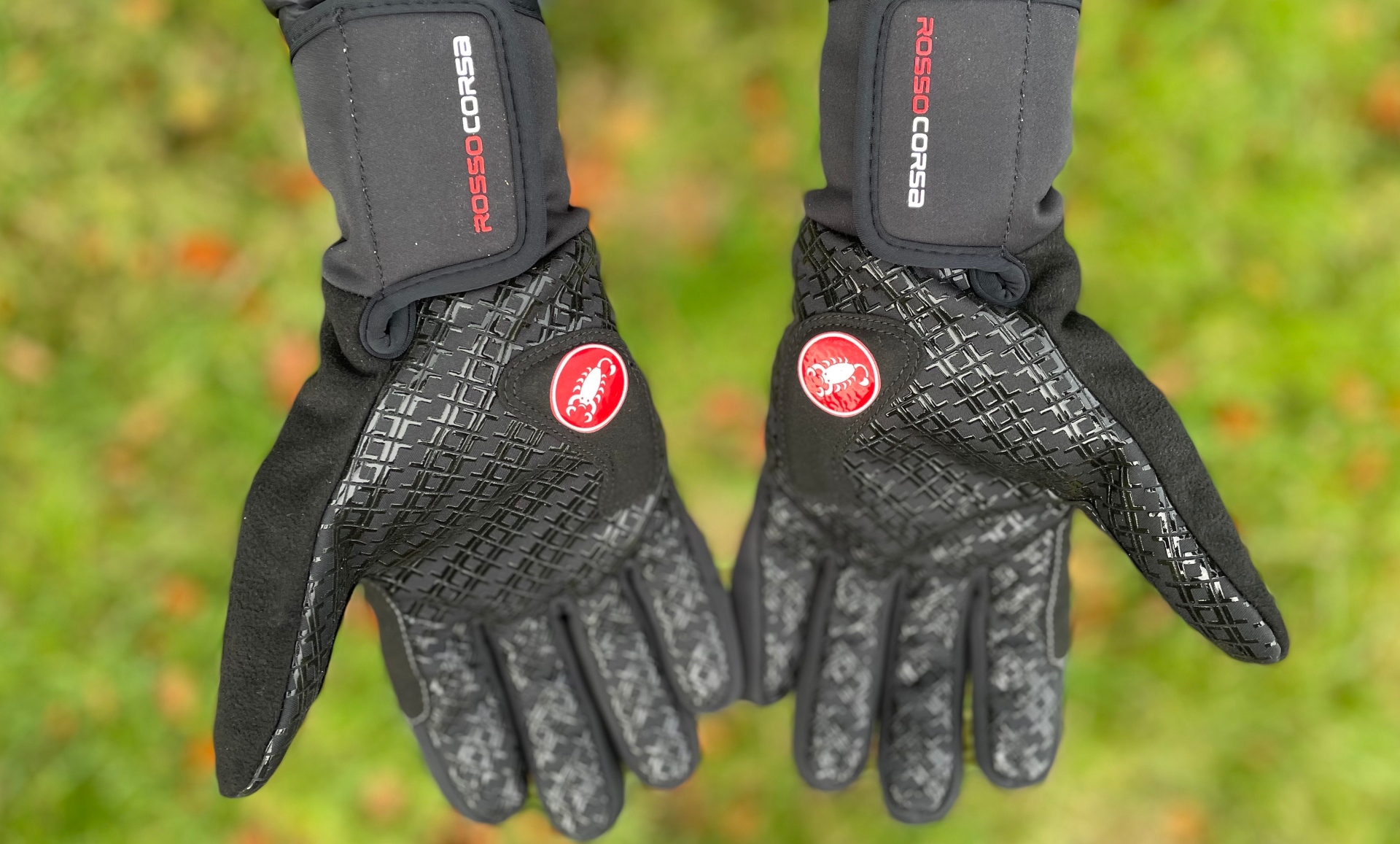
Value
Castelli's Estremo winter gloves cost £100 / US$99.99, which put them in the higher price bracket when it comes to winter gloves. The dhb Waterproof gloves are far cheaper at £30 / US$38 put don't offer the same warmth or quality of materials. The Giro Proof winter gloves offer a similar degree of protection and are priced at £80.00 / US$85.00. Rapha's Pro Team Winter Gloves are also priced at £80.00 / US$110.00 and offer a comparable build quality.
Verdict
Priced at £100 I was unsure if they gloves could justify this pretty high price tag. After all, I’ve worn cheaper gloves over many winters without too many issues. But the old adage rings true again. You get what you pay for.
In years past my hands have survived the colder mornings but not without some discomfort. However wearing the Castelli winter gloves there was none. Instead, my hands were warm and comfortable from the start of the ride to the finish. Importantly, this degree of warmth didn't come at the cost of feel at the bars and levers.
I often think that cycling in the winter can be a case of mind-over-matter. Donning the Estremo gloves helped to bring an element of peace to this sometimes challenging equation.
Specs
- Weight: 165g claimed, 126g actual (Size M)
- Sizes: XS-XXL
- Colours: Black
- Contact: www.castelli-cycling.com
FAQs
How do I keep my hands warm when cycling?
The best way of keeping your hands warm when cycling is with a dedicated pair of cycling gloves. When you’re travelling at speed, windchill can make your hands feel much colder than you’d expect for the temperature – opting for a glove with windproofing will make a big difference.
The next step is to look for quality insulation. A fleecy lining will go some way, but for the coldest days you’ll want something a bit more effective, such Primaloft or other lofty alternatives.
What temperature do you need cycling gloves?
The temperature at which cycling gloves become necessary varies from cyclist to cyclist. In general, it’s comfortable to start wearing mid- or lightweight gloves from about 12°C / 54°F and switching to full on winter cycling gloves at 6°C /43°F – but you may mange colder or make the change earlier.

Thank you for reading 20 articles this month* Join now for unlimited access
Enjoy your first month for just £1 / $1 / €1
*Read 5 free articles per month without a subscription

Join now for unlimited access
Try first month for just £1 / $1 / €1
Get The Leadout Newsletter
The latest race content, interviews, features, reviews and expert buying guides, direct to your inbox!
Luke Friend has worked as a writer, editor and copywriter for twenty five years. Across books, magazines and websites, he's covered a broad range of topics for a range of clients including Major League Baseball, the National Trust and the NHS. He has an MA in Professional Writing from Falmouth University and is a qualified bicycle mechanic. He has been a cycling enthusiast from an early age, partly due to watching the Tour de France on TV. He's a keen follower of bike racing to this day as well as a regular road and gravel rider.
-
 'I'll take a top 10, that's alright in the end' - Fred Wright finishes best of British at Paris-Roubaix
'I'll take a top 10, that's alright in the end' - Fred Wright finishes best of British at Paris-RoubaixBahrain-Victorious rider came back from a mechanical on the Arenberg to place ninth
By Adam Becket Published
-
 'This is the furthest ride I've actually ever done' - Matthew Brennan lights up Paris-Roubaix at 19 years old
'This is the furthest ride I've actually ever done' - Matthew Brennan lights up Paris-Roubaix at 19 years oldThe day's youngest rider reflects on 'killer' Monument debut
By Tom Davidson Published
-
 'One of the hardest races I've ever done in my life' - Tadej Pogačar finishes runner-up on Paris-Roubaix debut after crash
'One of the hardest races I've ever done in my life' - Tadej Pogačar finishes runner-up on Paris-Roubaix debut after crashWorld champion reacts to 'extremely hard' battle with Mathieu van der Poel
By Tom Davidson Published